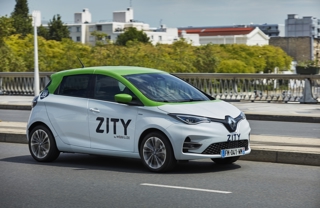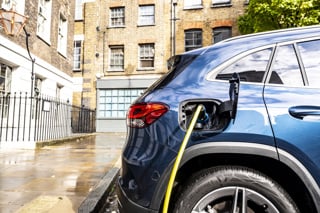Adam Hall, director of Energy Services at Drax EV
Many businesses are in the process of electrifying their fleets, and many more are preparing to start their journey. Investing in the right charging solutions to facilitate the switch is essential, otherwise you run the risk of expensive downtime and disruptions to your fleet operations.
EV charging stations come in slow, fast, rapid and ultra-rapid speeds. As with most technologies, there’s a tendency to equate faster with better, but in many cases it’s simply not required. A careful analysis of your fleet make-up and driver profiles will tell you what’s needed, ensuring that you’re only spending what you need to.
If you’re a fleet manager considering an EV fleet, here are a few key considerations.
Is speed a priority?
Your fleet usage will determine what type of charging you need. For example, if your fleet is in continuous use or your drivers need to travel long distances in short periods of time, fast charging allows you to keep your vehicles mobile without any long waits in between. Whereas, if your fleet only operates during working hours and sits idle overnight, slow charging might be the more sensible option.
With charging times of around 8 hours for a 7kW fast charger, and just 2.5 hours for a 22kW, fast chargers are a must for any business that runs a high-volume fleet.
Slow charging is still an option for some fleet operators. While they may take a little longer – typically around 10-14 hours – these are ideal for businesses whose fleets sit idle for longer periods of time, such as overnight, and can last the full day on one charge.
Besides slow and fast charging being significantly cheaper than rapid charging, they also put less demand on the grid, which helps with grid stabilisation. This will become increasingly important as more and more businesses make the switch to EV over the next few years. The National Grid predicts the need for 100 extra terawatt-hours to accommodate the 2030 ban. Slow charging can also help preserve your vehicles’ batteries through lower temperatures and a slower transfer of energy.
How to futureproof your chargers?
Once you’ve decided on the right type of charger infrastructure for your business, you’ll need to work out how many you’ll need to support your fleet. Remember, even if you don’t have many (or any) EVs in your current fleet, they will undoubtedly become a part of your business in the next 10 years. And with the 2030 ban only nine years away, now is the time for fleet managers to think ahead.
Installing an EV charging point normally requires a skilled technician to carry out groundwork, including digging to lay the cables. Therefore, it makes sense to plan ahead to avoid unnecessary disruption in the future. While this may cost more upfront, it’ll save you time and money in the long run.
Current government subsidies and incentives are just one of the reasons to bring forward planned investments before infrastructure costs rise. Taking advantage of initiatives like the Workplace Charging Scheme and the government’s 130% super-deduction will allow you to start your journey towards electrification sooner rather than later. It’s likely that the government will reduce or remove these incentives in the future, so it pays to get in early.
Fleet managers should also plan regular system upgrades to lessen future costs. As fast charging infrastructure increases, transformer and distribution site upgrades will be necessary and are subject to price increases as the market expands. Considering future upgrades – and getting ahead of the crowd – will help balance your electric fleet’s budget.
The foundations for an electric future
The EV revolution is happening, so for fleet managers it’s not a case of if but when they go electric. Taking the time to assess your operational needs both now and in the long term will ensure a smooth and cost-effective transition, helping you to lay the foundations for your future fleet and a more environmentally friendly business model and avoid unnecessary costs.





















Login to comment
Comments
No comments have been made yet.